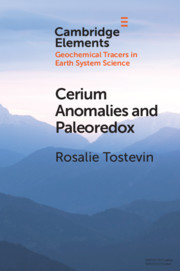Bridgesite-(Ce), (IMA2019-034), was discovered at Tynebottom Mine, Cumbria, UK. It occurs as thin (1–2 μm) translucent blue crystals with a lath-like to acicular habit, aggregated into thin crusts and is associated mainly with brochantite, malachite, serpierite, devilline, gypsum, aragonite, jarosite, pyrite, lanthanite-(Ce) and undifferentiated iron oxyhydroxides, it is often intergrown with these other minerals. The lustre, hardness, cleavage and parting could not be determined, nor could density be measured due to crystal size. It has a pale blue streak and is brittle with a splintery fracture. Bridgesite-(Ce) is biaxial (–), shows no pleochroism and has refractive indices (white light): α = 1.526(2), β = 1.564(2), γ = 1.572(2) and 2V(calc) = 48.3°. The empirical formula calculated on the basis of 44 negative charges is Ca0.86REEΣ1.99Al0.07Cu5.95(SO4)3.99(SiO4)0.05(PO4)0.02(OH)11.52⋅8H2O. The idealised formula is CaCe2Cu6(SO4)4(OH)12⋅8H2O, requiring (wt.%): 3.91 CaO, 22.89 Ce2O3, 33.28 CuO, 22.33 SO3 and 17.59 H2O. Bridgesite-(Ce) is monoclinic, space group C2/m, a = 24.801(5), b = 6.3520(13), c = 11.245(2) Å, β = 114.51(3)°, V = 1611.9(6) Å and Z = 2. The five most intense X-ray diffraction peaks in the measured pattern are [d in Å (I, %) (hkl)]: 11.3 (100) (200), 6.391 (15) (201), 2.770 (8) (420), 3.194 (6) (402) and 4.858 (5) (310). The crystal structure was solved using single crystal data and refined to an R1 index of 5.86%. Bridgesite-(Ce) contains three distinct Cu sites containing Cu2+, two are coordinated octahedrally and one is square pyramidal. The octahedra form chains through edge sharing parallel to the b-axis which are linked by the square pyramid to form sheets oriented parallel to {100}. Sulfate tetrahedra decorate the sheets which are held together by interstitial REE3+, Ca2+ and hydrogen bonding. The structure is unique. Despite apparent similarity in chemical formula, bridgesite-(Ce) is not closely related to any other natural Cu-sulfate mineral. An FTIR absorption spectra is presented for reference purposes.
